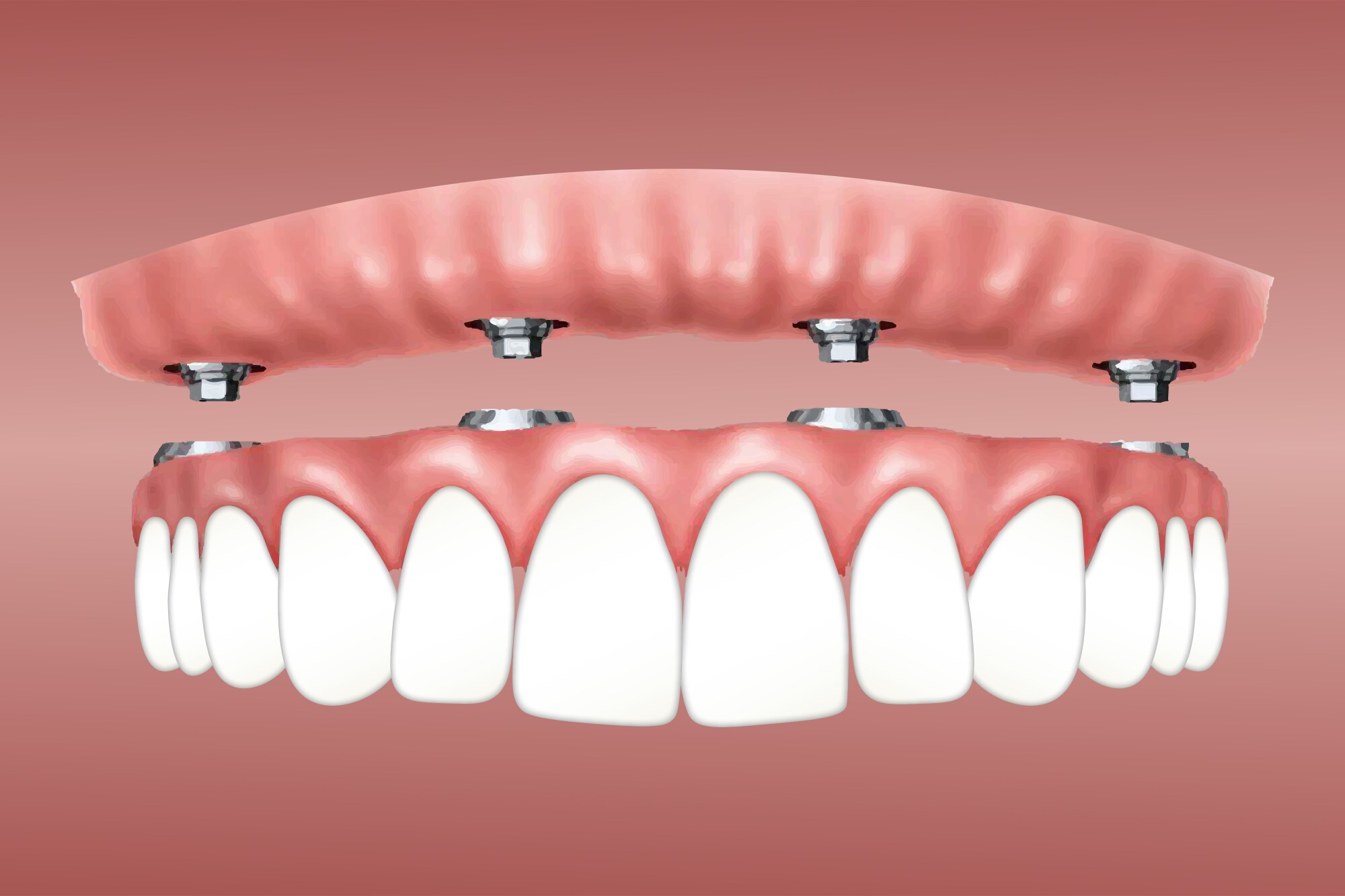The Best Guide To Dental Sense
The Best Guide To Dental Sense
Blog Article
The Buzz on Dental Sense
Table of ContentsThe 8-Second Trick For Dental SenseDental Sense Can Be Fun For EveryoneThe Only Guide to Dental SenseDental Sense - The Facts
are clinical gadgets surgically dental implanted right into the jaw to bring back a person's capacity to chew or their look. They offer assistance for fabricated (phony) teeth, such as crowns, bridges, or dentures. When a tooth is lost due to injury or disease, a person can experience issues such as rapid bone loss, faulty speech, or adjustments to eating patterns that result in pain.Oral dental implant systems consist of an oral implant body and dental implant joint and may additionally consist of an abutment fixation screw. Root canal procedure. The dental implant body is surgically placed in the jawbone instead of the tooth's root. The dental implant abutment is normally connected to the implant body by the joint fixation screw and extends through periodontals right into the mouth to support the affixed synthetic teeth
(http://www.place123.net/place/dental-sense-miami-united-states)Framework of The Oral Implant System selecting oral implants, speak to your dental copyright about the possible advantages and risks, and whether you are a candidate for the procedure. Points to think about: Your total health and wellness is a vital consider establishing whether you are a great prospect for oral implants, the length of time it will require to recover, and the length of time the dental implant may remain in location.
Cigarette smoking may affect the recovery process and reduce the long-term success of the dental implant. The recovery process for the implant body might take several months or longer, during which time you typically have a temporary joint in area of the tooth. the dental implant procedure: Meticulously comply with the oral health instructions offered to you by your oral service provider.
Dental Sense for Dummies
Implant failure can result in the need for an additional surgery to deal with or change the dental implant system. Brings back the ability to chew Brings back cosmetic appearance Helps maintain the jawbone from diminishing due to bone loss Preserves the health of the surrounding bone and gums Assists keep adjacent (nearby) teeth secure Improves lifestyle Damages to surrounding natural teeth during implant positioning Injury to the surrounding tissues throughout surgery, such as sinus opening Injury during surgery (for instance, fracture of surrounding jawbone) Insufficient function, such as seeming like the teeth do not bite together normally An experience that the tooth is loosened or turning in position resulting from an abutment screw loosening Implant body failing (looseness of the implant body) due to systemic infection, which may be more most likely in patients with unrestrained diabetics issues due to local infection in bone and gums supporting the implant body as a result of postponed healing, which might be much more likely in individuals who smoke Difficulty cleaning the periodontals around the dental implant, causing poor dental health Without treatment gum disease Post-surgical numbness as a result of nerve impingement or damages Always notify healthcare service providers and imaging technicians that you have oral implants before any magnetic vibration imaging (MRI) or x-ray treatments.
FDA is not aware of any negative events reported for MRI or x-ray procedures with dental implants. Dental implants systems are usually made of materials that follow global consensus criteria of the International Company for Standardization (ISO) or ASTM International. These requirements have details of what makes a safe material.

An oral implant is a structure that replaces a missing out on tooth. With screw-like tools, the doctor inserts a dental implant right into the jawbone, and it acts as an anchor for a fabricated tooth, called a crown.
The Only Guide for Dental Sense
Some individuals are not qualified for dental implant surgical treatment. It is for oral specialists to operate on people with: acute illnessuncontrollable metabolic diseasebone or soft cells illness or infectionIf these issues are dealt with, an individual can have the surgical treatment. In, oral surgeons avoid operating individuals with: If individuals with any of the above undergo dental implant surgical treatment, there is a greater threat of the implant stopping working.

Dental implant surgery is a customized process. Give you time to heal. Connect the message and last crown, bridge or denture.
Next off, your doctor see this here will thoroughly position the dental implant into your jaw. Ultimately, your cosmetic surgeon will reposition your gum tissues and shut the incision with stitches. If your dental implant is near the front of your mouth, your dental expert will certainly make a short-lived tooth for you to wear until you heal. This way, you will not have a space in your smile while you recover.
The 7-Second Trick For Dental Sense
Your service provider can inform you what to expect in your scenario. Throughout the healing phase, your jawbone must fuse to the oral implant. This procedure, called osseointegration, is essential for security and long-term success. This process can take anywhere from three to 9 months. In many cases, it might take longer.
Once your implant heals, your dental practitioner can attach the abutment (tiny adapter article) and your last remediation (crown, bridge or denture). This typically takes about one hour to complete and might need a 2nd small surgical procedure. You should not feel any pain during your dental implant treatment due to the fact that your company will certainly utilize medicine to numb your gums.
Report this page